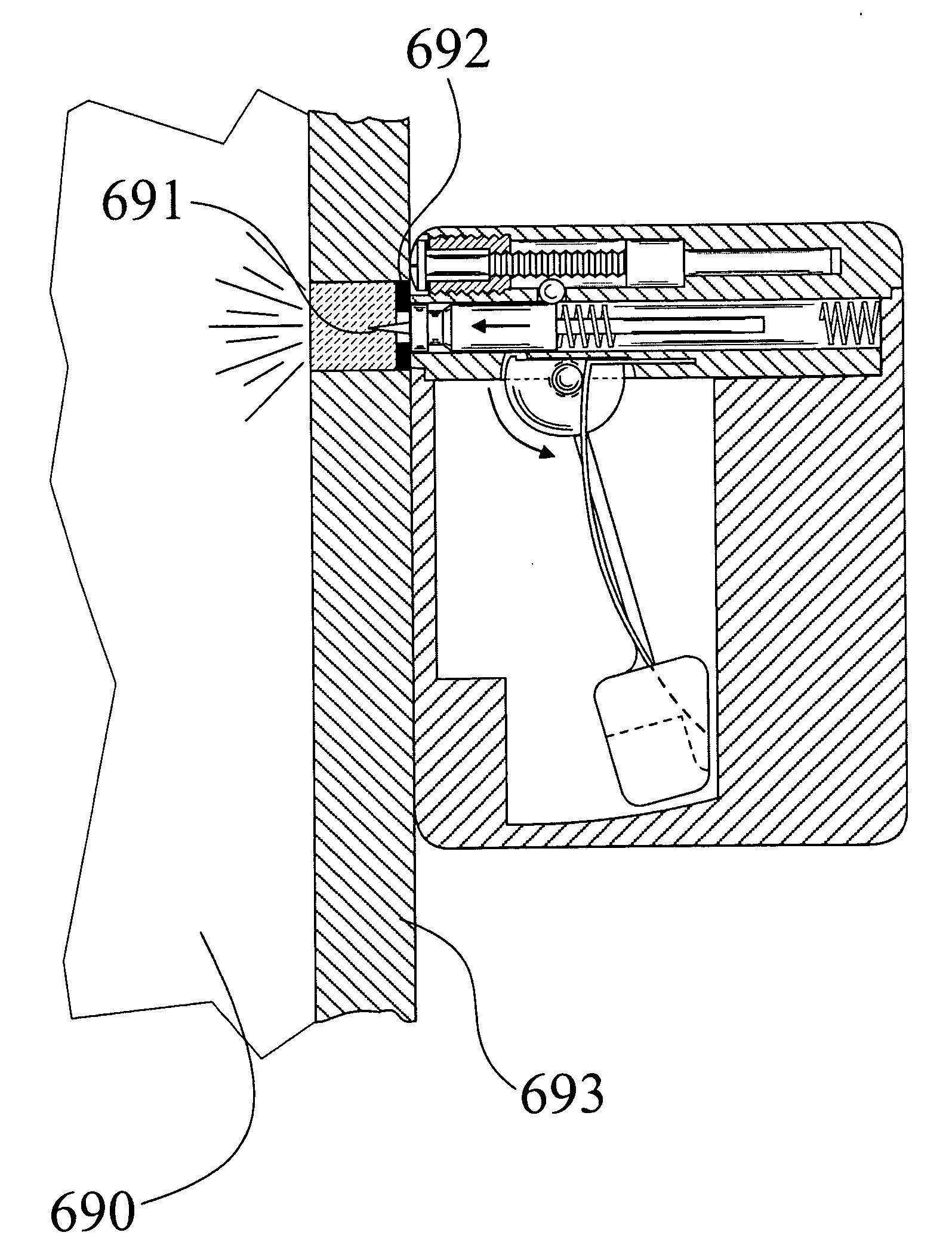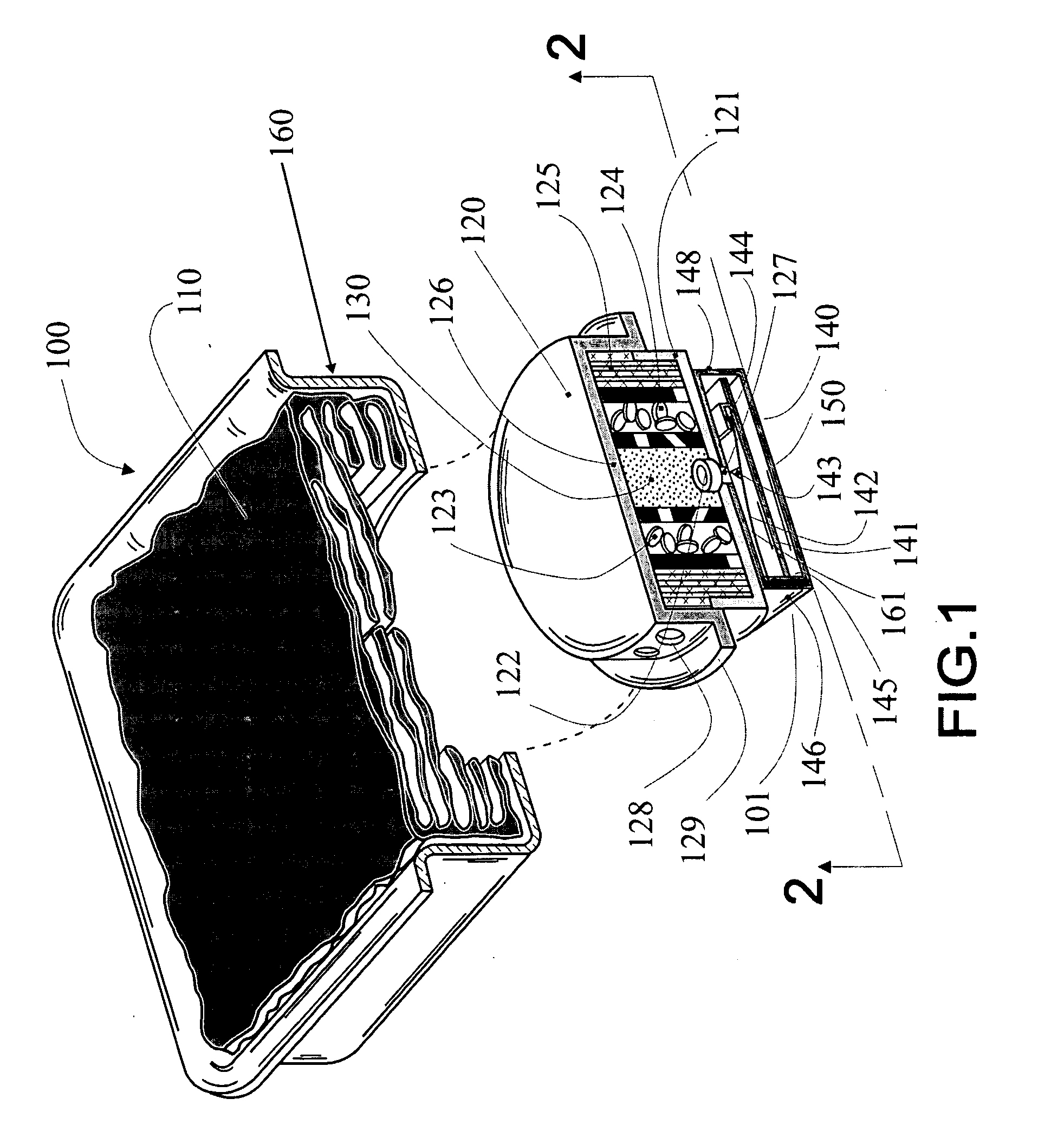Side Impact Sensor Systems
a sensor system and side impact technology, applied in the registration/indication of the working of vehicles, vehicle seats, special data processing applications, etc., can solve the problems of not being widely adopted partially, self-contained airbag systems have only achieved limited acceptance of frontal impacts, etc., and achieve the effect of reducing the size, weight and cost of the system
- Summary
- Abstract
- Description
- Claims
- Application Information
AI Technical Summary
Benefits of technology
Problems solved by technology
Method used
Image
Examples
Embodiment Construction
[0053]Referring to the accompanying drawings wherein like reference numerals refer to the same or similar elements, FIGS. 1 and 2 show an all-mechanical self-contained airbag system for mounting on the side of a vehicle to protect occupants in side impacts in accordance with the invention which is designated generally as 100. The airbag system 100 contains one or more inflatable airbags 110, an inflator assembly 120, a mounting plate 160 for mounting the airbag system 100 on the side of the vehicle and a sensor assembly 140 mounted to the inflator assembly 120. The sensor assembly 140 contains a rotatable, substantially planar sensing mass 141 and a cantilevered biasing spring 142 which performs the dual purposes of biasing the sensing mass 141 toward its at rest position shown in FIG. 2 and also providing the energy to the firing pin 143 required to initiate a stab primer 122 as further described below. The sensing mass 141 contains a firing pin spring-retaining portion 144 that re...
PUM
 Login to View More
Login to View More Abstract
Description
Claims
Application Information
 Login to View More
Login to View More - R&D
- Intellectual Property
- Life Sciences
- Materials
- Tech Scout
- Unparalleled Data Quality
- Higher Quality Content
- 60% Fewer Hallucinations
Browse by: Latest US Patents, China's latest patents, Technical Efficacy Thesaurus, Application Domain, Technology Topic, Popular Technical Reports.
© 2025 PatSnap. All rights reserved.Legal|Privacy policy|Modern Slavery Act Transparency Statement|Sitemap|About US| Contact US: help@patsnap.com



